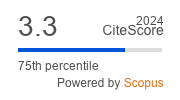Article | Open Access
Why Social Exclusion Persists among Older People in Australia
| Views: | 7323 | | | Downloads: | 4657 |
Abstract: The existing literature on social exclusion among older people, though relatively limited, suggests that disadvantage among older people is cumulative in nature. Some aspects of disadvantage starting at early life stages have long-term consequences. As such, older people with disadvantages may be subject to higher risks of persistent social exclusion. This article aims to improve understanding of social exclusion and its persistence among senior Australians in three ways. Firstly, the incidence of social exclusion among older people is analysed using selected indicators. Secondly, the study examines whether an older person experiencing social exclusion at one time is more likely to experience it again (persistence). Thirdly, it investigates what factors may be protecting older people from social exclusion. The analysis is conducted using the first eight waves of the Household, Income and Labour Dynamics in Australia (HILDA) Survey. The sample of older people is disaggregated into a younger group (55–64 years at wave 1) and an older group (65+ years). The article suggests that higher education and income, as well as better health conditions and previous employment experiences, are important protective factors from social exclusion for older Australians.
Keywords: Australia; disadvantage; elderly; social exclusion; persistence; older people; senior
Published:
© The author(s). This is an open access article distributed under the terms of the Creative Commons Attribution 4.0 license (http://creativecommons.org/licenses/by/4.0), which permits any use, distribution, and reproduction of the work without further permission provided the original author(s) and source are credited.


